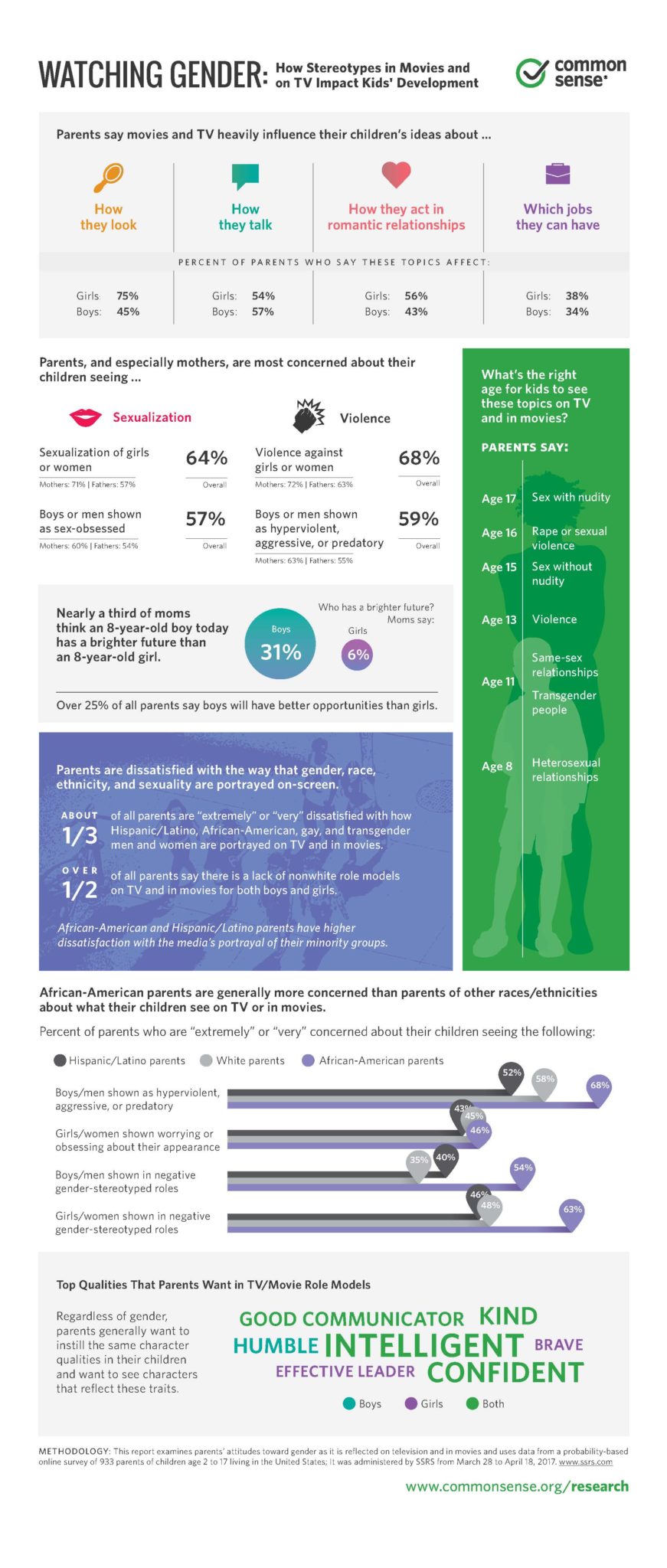Our media mantra here at CPYU has always been this: Media serves our kids as a map. In other words, it shapes the way they think about and live their lives. And, with teenagers engaged in 9 hours of daily media time. . . and tweens (ages 8-12) engaged with media for 6 hours a day. . . it makes sense that we (parents, grandparents, and youth workers) reckon with this reality by teaching our kids how to think critically and Christianly about music and media. We want to train them in ways that equip for a live of critical engagement rather than mindless consumption.
A recent report issued by Common Sense Media looks at issues of gender equity in media. Along with the report comes an interesting infographic (see below) that reveals what parental concerns regarding media influence in today’s world. Give it a look. Then, take a look at a resource we’ve created here at CPYU that will help you help your kids engage in lifetime of thinking critically and Christianly about media and music.

These info-graphical statistics seem to by typical tools used to encourage that which you and many others discourage: “stereotyping”. Our minds are constantly at work, and we are in perpetual and logistical ‘planning’ mode prior to any action we take or conversation we become a part of. The subconscious planning, scheming and stategizing that we do, often reinforces all sorts of demographic stereotypes to help us prepare to be successful in whatever action we plan to take. Take for example; a middle school boy is approached by two girls on the play ground that enlist him into a conversation. The boy’s mind is already creating a strategy of what he should and should not say. He would not dare to speak in the same immodest way he would speak if it were a group of same aged boys; why is that?
We raise our children to have respect for others, to not judge a book by it’s cover and to never assume negative stereotypes, but I feel that we are missing the boat in a very large way. Why do we not teach our children how to be good communicators and consistent in our communication regardless of who we are speaking with?
Good, ethical, empathetic and compassionate communication is a skill and it must be taught and practiced to become good at it. There are several key points that need to be taught and reinforced by the way we communicate with the children that we are raising. In the book “Ethics in human communications, 6th edition” (Johanneson, Valde, Whedbee 2008) the authors are quoting a feminist and scholar of communications named; Lana Rakow. In a speech she gave to a group of college students in Ohio (USA), she explained the basic fundamentals of this type of egalitarian speech. She laid out three ‘ground rules’ to help people communicate as equals and therefore make any pre-conceived stereotypes irrelevant. The ‘ground rules’ are; Inclusiveness, Participation and Reciprocity (p. 214).
In order to communicate on equal grounds, one must be inclusive of the other party. One must see her or himself as equals in the conversation. The speaker, sometimes referred to as the rhetorical conqueror, must also allow complete and equal participation in the conversation, allowing equal time to speak, listen and propose different viewpoints. And finally, the speaker must allow reciprocity to rule the conversation, or the idea that all participants have an equal share in the outcome of the conversation.
If one was to really teach our young people the art of really dialogical conversation, then negative stereotypes would not be able to rare their ugly heads.
References from the above citations:
Johanneson, Richard L., Valde, Kathleen S., Whedbee, Karen E. Ethics in human communication, 6th edition. (2008) Waveland Press Inc.